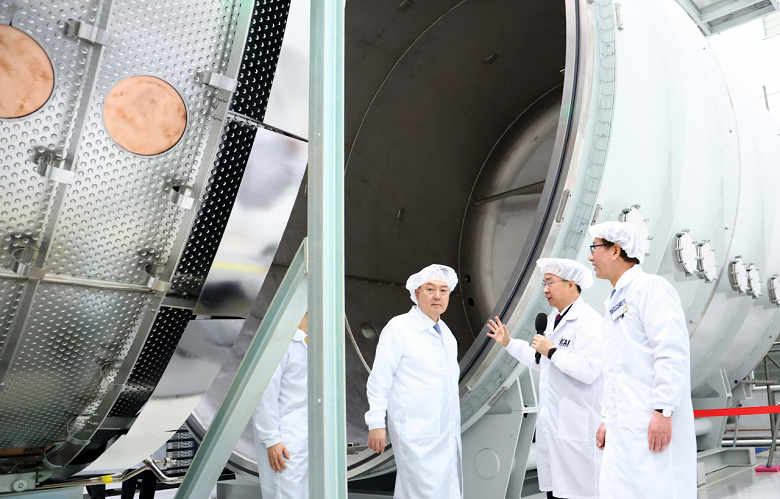The country plans to send a mission to the Moon by 2032 and plant its flag on Mars by 2045
South Korea has unveiled ambitious plans to create a space industry cluster over the next eight years. It will include not only the production of satellites and rockets, but also the training of astronauts. To achieve these goals in 2027, the South Korean government will allocate approximately $1.14 billion from its 2027 budget, a significant increase from the current year's $745.7 million budget.
South Korean President Yoon Seok-yeol said that funding will be the basis for the prosperity of the country's aerospace industry. He predicts that by 2045, South Korea's share of the global aerospace industry will increase from the current 1% to 10%, and the creation of about 250,000 new jobs in the space industry will be an additional boost to economic development.
«By 2032, South Korea will send its first mission to the moon, and by 2045, the first national flag will be planted on Mars», — Yoon said during the cluster launch ceremony at the Aerospace Industries headquarters in Sacheon, South Gyeongsang Province.
Yoon noted that the government is seeking to create a new cluster that will become a key player in the global aerospace industry and help South Korea become one of the top five countries with leading space centers.
As part of the plan, $892.8 million will be spent on the project. These funds will be distributed across three regions that form an aerospace industry cluster: a production center for satellite development will be built in Sacheon, in Goheung — a new production center and test site for launch vehicles, and an aerospace training and research center will be established in Daejeon.
As part of the cluster, Sacheon, which is preparing to launch the state-owned Korea Aerospace Administration (KASA) in May, will begin creating a satellite development production center in Sacheon. It includes five cleanrooms with controlled environments, as well as 26 types of equipment, including lasers and coordinate measuring machines.
The new production center and testing site in Kokhyn will be equipped with a wide range of equipment, including a large 3D printer. This center will become the base for creating and testing launch vehicles. It also provides for the construction of a new launch pad and assembly shop for commercial rockets on an area of 24,000 square meters.
The new aerospace training and research center in Daejeon will create 16 facilities, including preparation for docking in space, control of Mars rovers and analysis of thermal structures of space satellites. This center will be able to train up to 1,500 specialists annually, which contributes to the development of qualified personnel in the aerospace industry. As of 2021, only 5% of all aerospace workers in the country had advanced degrees in a space-related field.
To implement the plan, a total of $535.7 million will be spent on the construction of three new facilities until 2031. In addition, it is planned to create a new industrial complex with an area of 1.73 square kilometers in Kokhyn with an investment of $357.1 million.
The 1.65 square kilometer Sacheon Aerospace Industrial Complex is ready to attract companies and facilities later this year.
In addition, it is planned to establish centers for environmental testing of satellites in Jinju (South Gyeongsang Province).
Yoon promises that South Korea will create at least 10 “world-class” aerospace technology companies by 2045, partly by expanding its venture capital fund.
For the purpose of development and international cooperation, active interaction of the new cluster with clusters of foreign countries is planned, including the Kennedy Space Center in the USA and the Toulouse Space Center in France.
In May 2023, South Korea used homegrown rockets to send research satellites into orbit from a South Korean launch pad, and in November a Korean spy satellite entered orbit after a successful launch in the United States in November.

